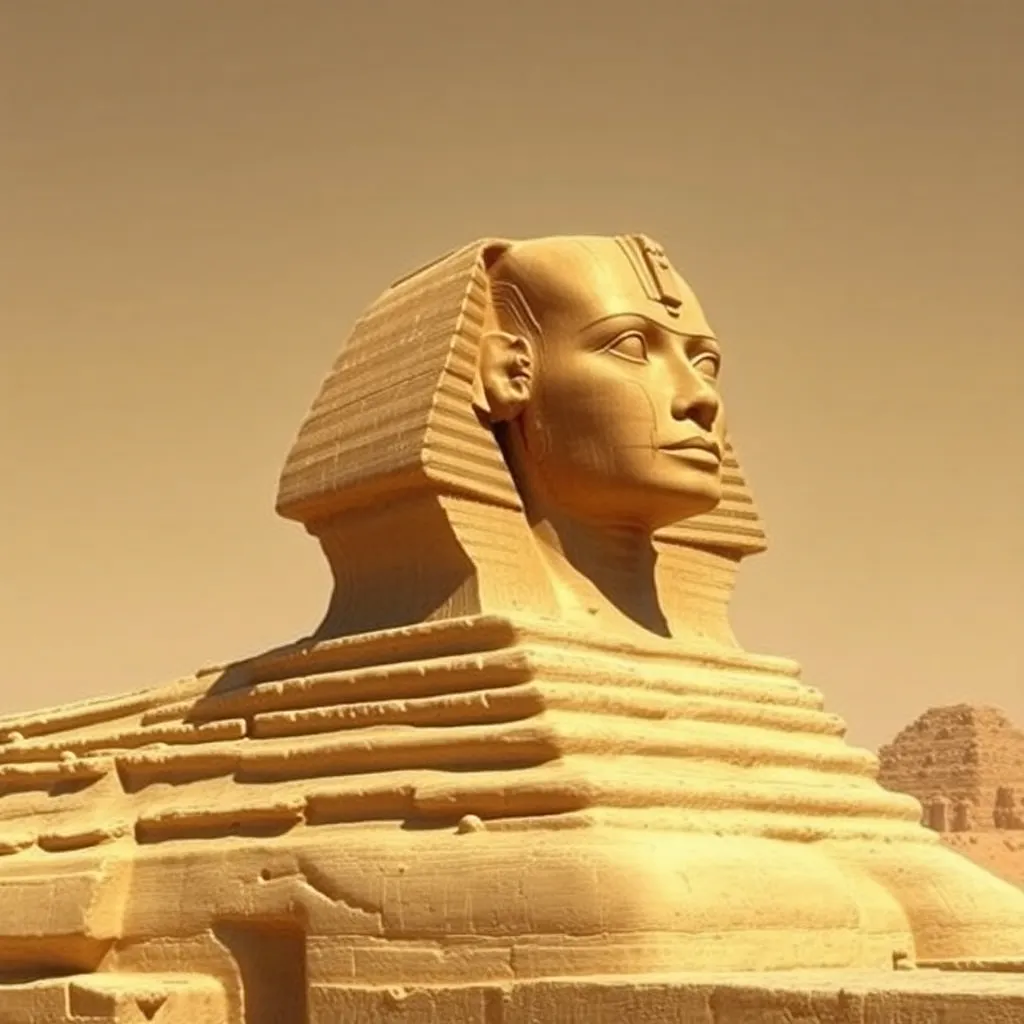The Sphinx and Its Role in Egyptian Trade and Economy
I. Introduction
The Great Sphinx of Giza stands as one of the most iconic monuments of ancient Egypt, capturing the imagination of scholars and tourists alike. Its grand scale and intricate design speak volumes about the civilization that created it, making it a symbol of the rich historical tapestry of Egypt. Throughout history, the Sphinx has not only served as a cultural and religious icon but also played a pivotal role in the economic activities of ancient Egypt.
This article aims to explore the multifaceted influence of the Sphinx on trade and economic activities, highlighting how this monumental structure contributed to the prosperity of ancient Egyptian civilization.
II. Historical Context of the Sphinx
The Sphinx was constructed during the reign of Pharaoh Khafre, around 2500 BCE. It is carved out of limestone and is notable for its impressive dimensions, standing at 20 meters high and 73 meters long, making it the largest monolithic statue in the world.
In addition to its architectural significance, the Sphinx held immense cultural and religious importance in ancient Egypt. It is often associated with the sun god Ra and the pharaohs, symbolizing strength, protection, and wisdom.
Geographically, the Sphinx is located on the Giza Plateau, adjacent to the pyramids, which were key landmarks in ancient trade routes. This strategic location facilitated the movement of traders and travelers, further enhancing the Sphinx’s role in the economy.
III. The Sphinx as a Tourist Attraction
Tourism in ancient Egypt blossomed around the time of the Sphinx’s construction, as pilgrims and visitors came to pay homage to the pharaohs and the gods. The Sphinx became a must-see destination, attracting not only locals but also foreigners who contributed to the economy.
The economic benefits derived from pilgrimage and visiting the Sphinx included:
- Increased local commerce, as traders set up stalls and shops to cater to visitors.
- Creation of jobs related to hospitality, guiding, and maintenance of the site.
- Revenue generated from offerings and tributes left by pilgrims.
When compared to other ancient monuments, the Sphinx’s unique allure significantly impacted local economies, making it a focal point for trade and tourism in the region.
IV. Trade Routes Associated with the Sphinx
Ancient Egypt was crisscrossed by vital trade routes that facilitated the exchange of goods and ideas. The Sphinx’s location made it a prominent landmark along these routes, guiding traders and travelers as they navigated the landscape.
Key aspects of the Sphinx’s role in trade routes include:
- Its position as a navigational point for caravans traveling between the Nile and desert trade routes.
- Facilitating the exchange of luxury goods, such as gold, spices, and textiles.
- Promoting cultural exchange through interactions between diverse groups of people.
Thus, the Sphinx not only represented a physical landmark but also served as a symbol of economic connectivity and cultural collaboration.
V. Economic Activities Linked to the Sphinx
The area surrounding the Sphinx was a hub of local commerce and activity. Markets flourished as vendors took advantage of the steady flow of visitors and traders. Economic activities associated with the Sphinx included:
- Local markets selling goods such as food, textiles, and handcrafted items.
- Artisans and craftsmen producing Sphinx-related artifacts and souvenirs.
- Trade in goods brought by visitors, including offerings for the Sphinx and other deities.
This vibrant economic environment contributed to the overall prosperity of the region, establishing the Sphinx as a focal point for commerce.
VI. Symbolism and Its Economic Implications
The Sphinx symbolizes power, stability, and the divine connection between the pharaohs and the gods. This symbolism had profound implications for trade and economic policies in ancient Egypt.
Key points regarding the Sphinx’s symbolism and its economic implications include:
- Its representation of the pharaoh’s authority helped maintain political stability, essential for a thriving economy.
- Influence on trade policies that favored the protection of trade routes and resources.
- Promotion of Egyptian goods and culture abroad, strengthening international trade relations.
Thus, the Sphinx not only served as a monumental structure but also played a critical role in shaping economic strategies and trade practices.
VII. The Legacy of the Sphinx in Modern Times
Today, the Sphinx continues to attract millions of tourists, contributing significantly to Egypt’s contemporary economy. The legacy of the Sphinx can be seen in several areas:
- The ongoing impact on tourism, providing jobs and economic opportunities for local communities.
- Preservation efforts aimed at maintaining the Sphinx, which involve significant investment and have economic implications for the surrounding areas.
- The Sphinx as a symbol of Egypt’s rich heritage, promoting cultural pride and global recognition.
This enduring legacy underscores the importance of the Sphinx not only as an archaeological treasure but as a vital component of Egypt’s economic landscape.
VIII. Conclusion
In summary, the Sphinx’s multifaceted role in trade and the economy of ancient Egypt is a testament to its significance in shaping the civilization’s prosperity. From its construction to its function as a tourist attraction and trade landmark, the Sphinx has influenced economic activities throughout history.
Preserving such historical monuments is crucial, as they provide insights into our past and contribute to contemporary economic dynamics. The Sphinx stands not only as an emblem of ancient Egypt’s greatness but also as a vital part of its ongoing economic heritage.




